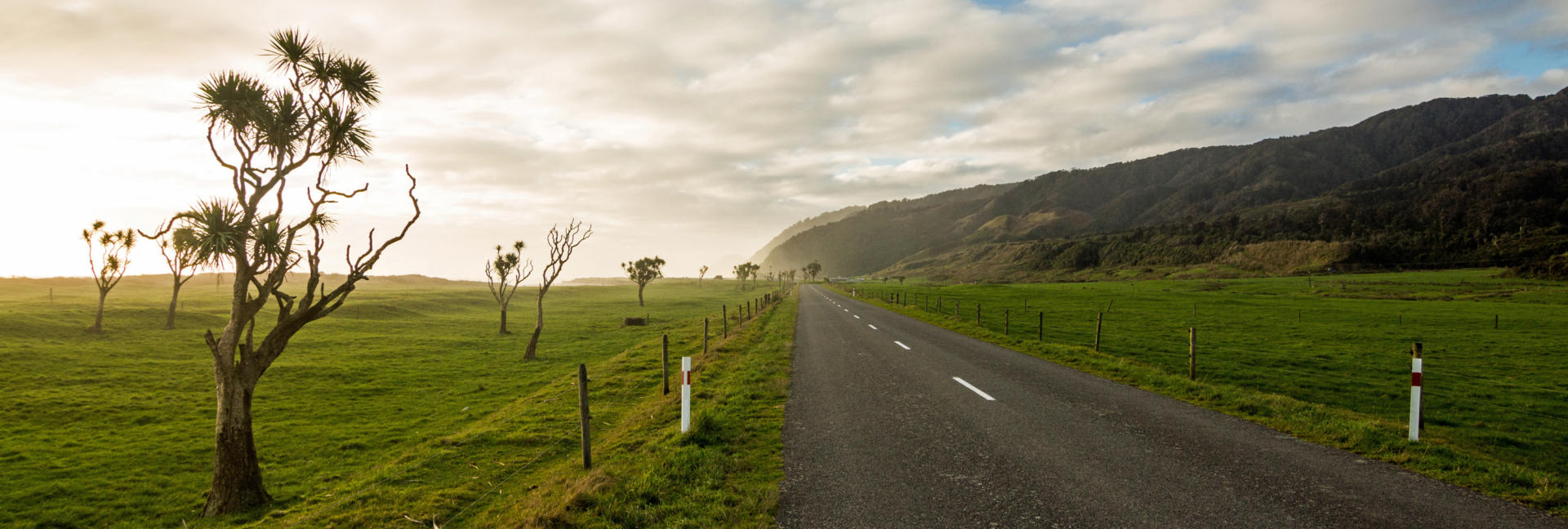
New Zealand is often described as a compact package of the world’s highlights in a landmass the size of the U.K. or California. For drivers there truly is a new vista around every corner. Add a panoramic windscreen through which to take in the scenery and a cosy apartment behind you - there's little wonder that Frontiersfolk remember their road trips through our unhurried land for the rest of their lives. With thousands of kilometres of sparkling coastline, an alpine fault line providing spectacular mountain passes, volcanoes and fjords, and a sparse population density of five million friendly people in a country the same size as others with 60 million and more, it’s hard to disappoint anyone travelling with the independence of their own motorhome.
While it is natural to experience some apprehension about driving in a foreign country, any such caution invariably results in a more conservative approach that only enhances safety. Visitors considering travels by motorhome can be reassured that accident statistics for overseas drivers on New Zealand roads are no different to those of local drivers. Furthermore, New Zealand Frontiers clients routinely compliment the quality of local roads, behaviour of other traffic and the overall driving experience.
All New Zealand Frontiers rentals benefit from the kind of personal attention upon vehicle delivery that reviews confirm you simply don’t get from larger companies. As owner/operator I take pride in ensuring that you get all the tuition and guidance you need in a relaxed environment before heading off on your road trip of a lifetime.
• New Zealand is larger than most visitors realise. State Highway One (SH1) stretches for just over 2000km taking a direct route from one end of the country to the other - the same distance as driving from Edinburgh to Vienna, from Seattle to San Diego or from Adelaide to Brisbane. An average self-drive round-trip tour of three weeks’ duration covers 4000 kilometres without reaching the country’s extremities, and those on more leisurely travels may cover 6000 kilometres or more.
• The relatively slender appearance of New Zealand results in many independent visitors considering one-way road trips through the country. However the stark variations in scenery between the east and west coasts and the central regions of both islands means that one-way road trips and even itineraries that zigzag from one end of the country to the other tend to miss out on much of the diversity New Zealand is renown for. As 80% of visitors arrive in Auckland, motorhome rentals that terminate at the other end of the country also require significant relocation expenses that are passed on to hirers. Round trips of both islands are easily achieved on rentals of three weeks duration or longer and are encouraged for both taking in more of the country and being a more cost effective option.
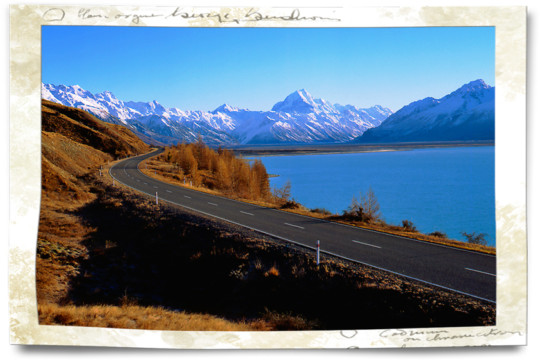
• 50% of our population live in the upper half of the North Island, with 30% within the Auckland region. In much of the remaining three quarters of the country traffic volumes are comparable to those in other sparsely populated regions of the world like Scotland, much of Australia or even Alaska.
• Less than 500 kilometres of New Zealand’s 100,000 kilometres of roads are motorway or expressway. This results in average speeds on longer journeys being significantly lower than elsewhere in the world. On intercity drives you can expect to maintain an average speed of approximately 80 kilometres per hour. However this may vary from as high as 90 to as low as 50 kilometres per hour in some of the areas you are likely to visit.
• Fuel stations are rarely more than 50 kilometres apart, with only a couple of regions where you can travel 200 kilometres between fuelling opportunities. All New Zealand Frontiers motorhomes are fitted with long range tanks, providing over 800 kilometres travel from full. This offers the opportunity to avoid having to purchase fuel in expensive rural extremities where fuel quality may also be inferior. All major fuel stations have shops selling legendary pies and seriously good coffee.
• There are very few toll roads and access to those that do exist is included in your New Zealand Frontiers rental package.
• Weather rarely interrupts the travels of Frontiersfolk. However phenomenal rainfall is occasionally encountered, particularly in alpine regions of the South Island where road damage caused by storm events can occur. Snowfall to road levels outside of the summer months is also usually brief and rarely results in delays. Travel on a limited number of alpine routes during winter months is occasionally conditional on carrying tyre chains and these are available at no additional cost from New Zealand Frontiers where appropriate.
• Common courtesy and some accommodation of the needs of others always goes a long way towards creating a safe and harmonious driving environment. You may encounter farmers moving livestock, rural post deliveries, heavy trucks carrying milk, logs and general freight, touring cyclists, road maintenance crews and drivers hurrying from A to B who think they own the road. Not all road users are on holiday, but you’ll quickly pick up the local etiquette of overtaking safely, allowing faster traffic to pass, and of giving a friendly toot to others who move over.
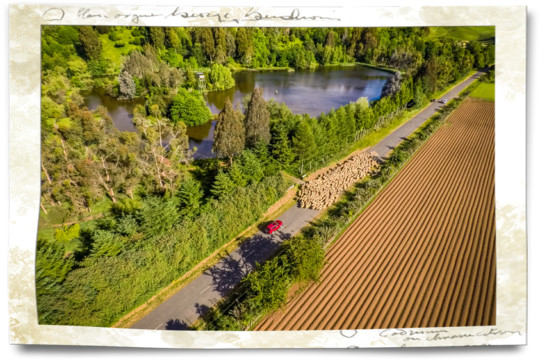
• Creating an itinerary that allows an occasional couple of nights in the same location using New Zealand Frontiers’ superb Explore NZ guide will offer time to linger and avoid the need to move on every day. If you are particularly organised, try creating a plan that is a little shorter than your rental duration to provide extra time up your sleeve with which to spend in locations you particularly enjoy, or to travel to those additional locations you hear about along the way.
Driving in New Zealand is not significantly different from driving in other parts of the developed world. Holders of any foreign driver’s licence for a car are entitled to drive vehicles of up to 6000kg here for a maximum of 12 months. However, if the text on your licence is not in English, you must also carry an official translation of the licence with you. We drive on the left and speed limits are generally 100 kilometres per hour in rural areas and 50 kilometres per hour in urban areas – though variations are common and well indicated.
Some excellent resources are available online for people planning a self-drive visit to New Zealand, including the Driving Tests Road Rules Quiz and the Drive Safe Introductory Video for Visiting Drivers.
The New Zealand Transport Agency (NZTA) offers the following advice for drivers visiting from abroad:
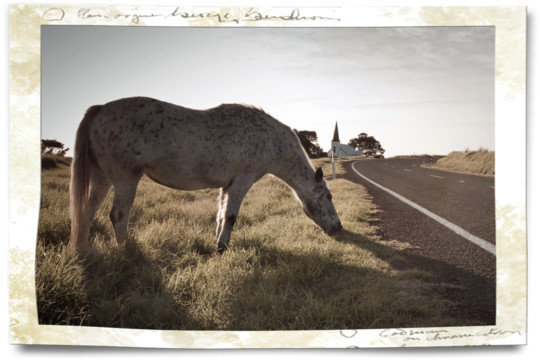
General
Roads are monitored by NZ Police who ensure that all road users stick to the rules and stay safe. Speed cameras operate all over the country. If you break the road rules or cause a crash, you could be fined or prosecuted
Keep left
Always drive on the left side of the road. Some narrow roads don’t have centre line markings to guide you.
Overtaking
Most roads in New Zealand have a single lane each way, and some provide ‘passing lanes’ at regular intervals. ‘Passing lanes’ should be used where possible when overtaking, please be patient until you reach them.
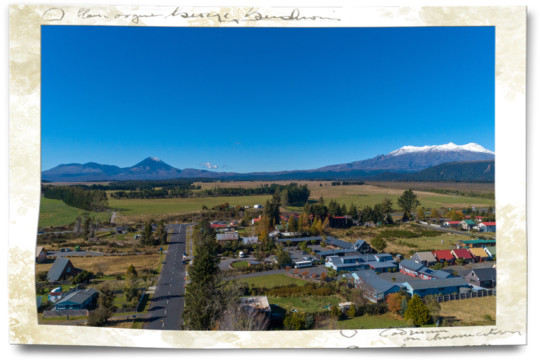
Speed limits
The speed limits on New Zealand roads vary – look for speed limit signs. They will let you know what the maximum speed limit is for the stretch of road you’re on. You’ll often need to go slower than the limit to drive on our roads safely. That means a 100km distance will seldom equal one hour of driving. It will usually take a lot longer, so always allow more time when planning your trip.
Intersections
One lane bridges
Some roads in New Zealand have one-lane bridges where vehicles must stop and wait for vehicles coming from the other direction.
Signs warn that there is a one-lane bridge ahead. Slow down and check for traffic coming the other way. Stop if you need to give way in accordance with the sign showing which direction has the right of way.
Enjoy the view safely
Keep your eyes on the road, not the scenery. If you want to stop and look at the view, make sure you find a safe place to pull completely off the road and stop.
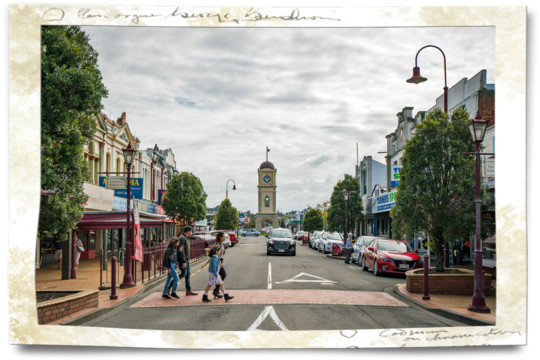
Mobile phones
Drivers must not use a hand-held mobile phone when driving. If a phone is used it must be hands free. Texting on any mobile phone while driving is illegal.
Seat belts
By law, everyone in the vehicle must wear a seat belt or (if under seven years of age) child restraint – whether they’re in the front or back. New Zealand Frontiers supplies complimentary child and infant restraints where required.
Fatigue
If you’re tired you’re much more likely to have a crash.
Railway Crossings
Approach with caution.
Unsealed (gravel) roads
Unsealed roads can be slippery to drive on. Keep left, reduce your speed, and slow down even further when approaching oncoming traffic as dust could obscure your vision and loose stones could chip your windscreen.
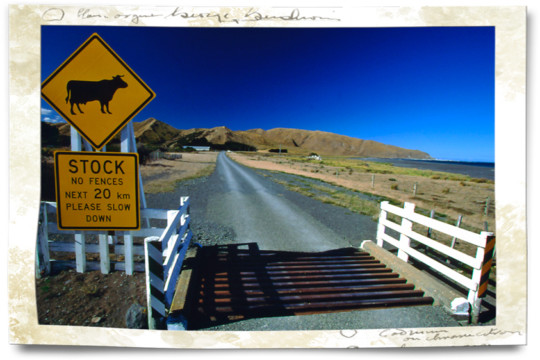
Sharing the road
Cars do not have priority over pedestrians and cyclists in New Zealand.
Winter driving
Our weather conditions can change quickly so driving takes skill and concentration. Check road and weather conditions before you travel and be flexible with your journey. Snow and ice can make roads even more hazardous, particularly around mountain passes. New Zealand Frontiers will supply snow chains if you’re likely to be driving in these conditions and ensure you know how to fit them before setting out. Look out for signs warning of a slippery surface in wet or icy conditions – slow down and avoid sudden braking.
Travelling times
It’s easy to underestimate travelling times in New Zealand. Distances may seem short on the map but our roads can be narrow with more curves and hills, and vary from motorways (freeways) to unsealed gravel roads. Outside the major cities our roads are mostly two-way with only one lane in each direction.
Parking
In New Zealand, you can be fined or towed away for parking on the wrong side of the road, unless it is a one-way street, where you’re allowed to park on either side of the road.
Alcohol and drugs
Don’t drink alcohol or use drugs and then drive. Recreational drugs are illegal in New Zealand. For drivers under 20 years old there is a zero alcohol limit. For drivers aged 20 and over, the alcohol limit is 50 milligrams per 100 millilitres of blood or 250 micrograms per litre of breath.
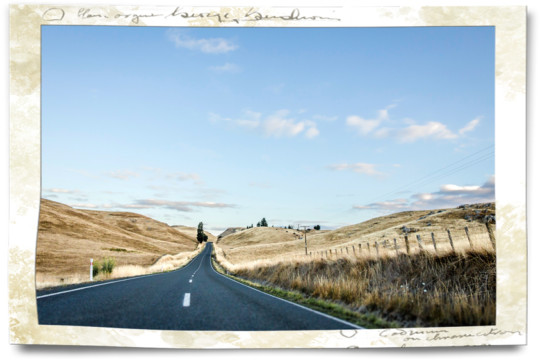
Emergency vehicles and school buses